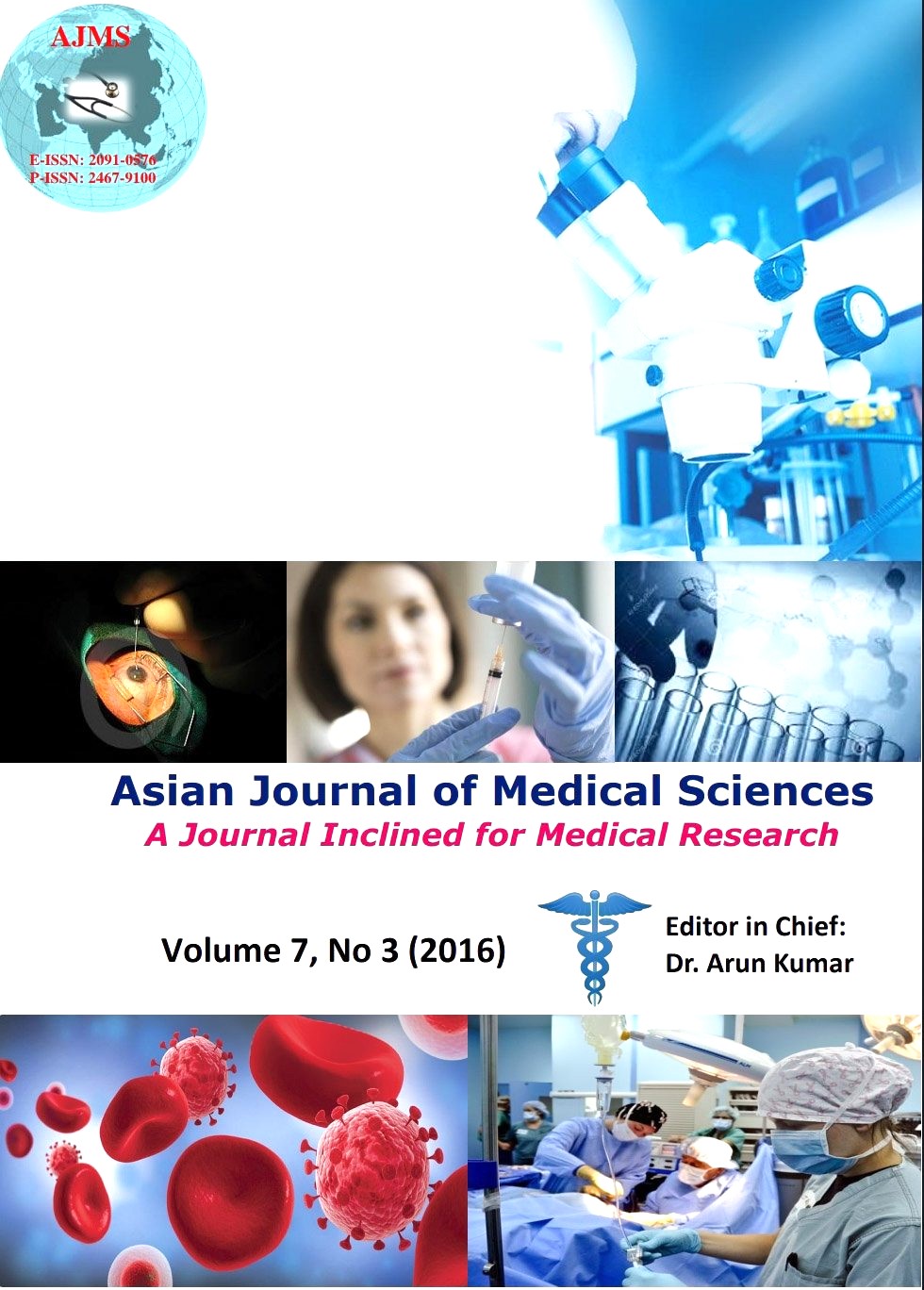Chemical bile duct embolization for chemical hepatectomy, long term efficacy and feasibility in rats
Keywords:
hepatolithiasis, bile duct, chemical embolization, chemical hepatectomyAbstract
Background: Hepatolithiasis is the presence of calculi within the intrahepatic bile ducts. It represents a significant problem in hepatobiliary surgery because of its high recurrence rate and the associated intra-operative and post-operative risks. This study was designed to explore the long-term efficacy of chemical biliary duct embolization (CBDE) to treat recurrent hepatolithiasis and to explain the mechanism of CBDE.
Aims and Objectives: To investigate the long term efficacy of chemical bile duct embolization (CBDE) on the targeted hepatic lobe and to explain the mechanism of CBDE to achieve chemical hepatectomy.
Materials and Methods: The median biliary duct of rats were embolized with phenol and N-butyl-cyanoacrylate. The short-term (6 weeks) and long-term (12 weeks) effects of chemical bile duct embolization were compared by observing the degree of atrophy, fibrosis, and proliferation of collagen fibers and apoptosis of hepatocytes of the embolized hepatic lobe. The feasibility and effectiveness of chemical hepatectomy were analyzed by histology, Western blot analysis of collagen I fibers and assessment of hydroxyproline content.
Results: After 6 weeks of the procedure, destruction of hepatocytes, fibrosis and "self-cut" was seen only in the periphery of the targeted hepatic lobe. Whereas after 12 weeks, complete destruction of hepatocytes, and replacement with proliferative bile ductules and collagen fibers leading to complete fibrosis and "self-cut" phenomenon in the whole targeted hepatic lobe was seen. Collagen I expression in the 6-weeks treatment group and 12-weeks treatment groups were 4 times and 12 times higher than that in the Sham operated (SO) group respectively (P<0.05). In addition, there was increase in hepatic hydroxyproline content (HYP) approximately by sevenfold in 6-weeks treatment group and twentyfold in 12-weeks treatment group after CBDE, when compared to that in the SO group (P<0.05).
Conclusion: Chemical bile duct embolization can achieve ideal effect of chemical hepatectomy in the whole targeted lobe.
Asian Journal of Medical Sciences Vol. 7(3) 2016 41-46
Downloads
Downloads
Published
How to Cite
Issue
Section
License
Authors who publish with this journal agree to the following terms:
- The journal holds copyright and publishes the work under a Creative Commons CC-BY-NC license that permits use, distribution and reprduction in any medium, provided the original work is properly cited and is not used for commercial purposes. The journal should be recognised as the original publisher of this work.
- Authors are able to enter into separate, additional contractual arrangements for the non-exclusive distribution of the journal's published version of the work (e.g., post it to an institutional repository or publish it in a book), with an acknowledgement of its initial publication in this journal.
- Authors are permitted and encouraged to post their work online (e.g., in institutional repositories or on their website) prior to and during the submission process, as it can lead to productive exchanges, as well as earlier and greater citation of published work (See The Effect of Open Access).




